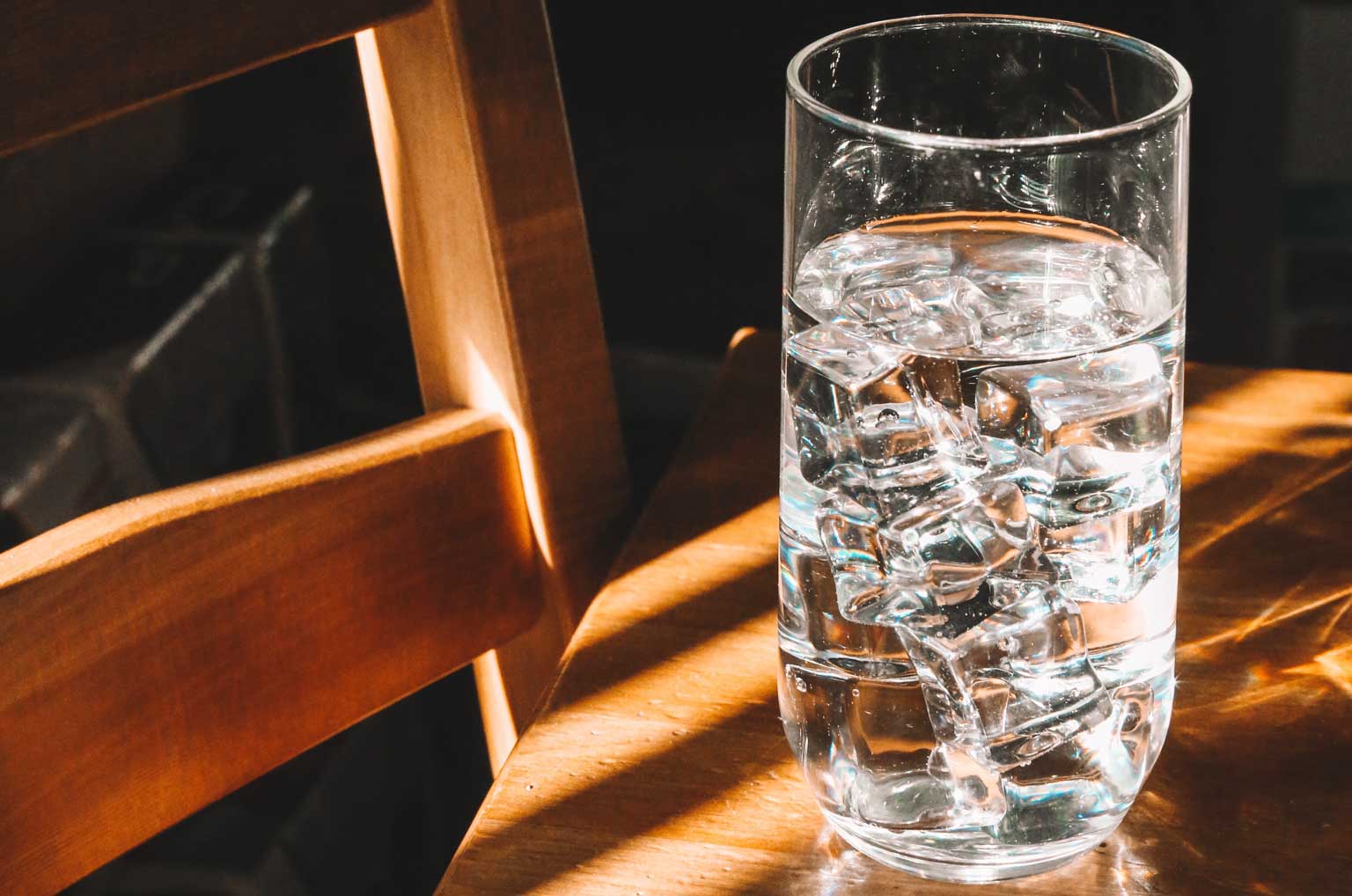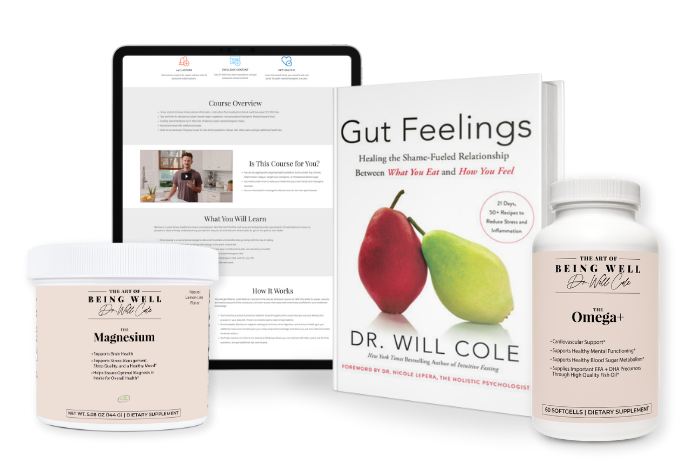What’s Really Hiding In Your Water? (+ The Best At-Home Filtration Options)

In 1974, congress passed the Safe Drinking Water Act, (1) improving water quality nationwide, but we could still do better. This act only regulates 90 pollutants, and most drinking water contains many more contaminants that aren’t regulated. In fact, according to a 2023 study (2) from the US Geological Survey, half of America’s tap water is contaminated with “forever chemicals”. But that’s not all. This number is likely a lot higher since the study only looked at 32 of the 12,000 different types of PFAS - the “forever chemicals” dangerous to our health. The CDC even reported that 97% of Americans (3) have PFAS in their blood.
As a functional medicine practitioner, I get asked a lot of questions about water, and how to improve its quality. We’ve all seen the scary news stories (like the one in Flint, Michigan) that make it clear that it is up to us to find out what’s in our water supply and determine how to make it safer.
ARTICLE CONTINUES BELOW
Make Your Life a Cleanse
SUBSCRIBER-ONLY GUIDES FOR GUT HEALTH, VIBRANT ENERGY, HEALTHY FOOD & CLEAN ALCOHOL
Get FREE access to these + giveaways, recipes, & discount codes in personal emails from Dr. Will Cole.
What chemicals are in your water?
Now, you might be wondering what exactly is in your water supply and where these chemicals even come from. The findings from multiple studies, sound like a toxic cocktail:
- Car emissions
- Chemical fertilizers
- Flame retardants
- Heavy metals (lead, mercury)
- Industrial solvents
- Personal care products
- Pesticides
- Pharmaceuticals
- Rocket fuel
- Runoff chemicals
- Weed killers
Mmm, delicious! In the past, skeptics have downplayed the importance of these findings because many of these pollutants are found in small amounts, but there is a growing body of evidence pointing to the reality that consuming these water additives, even in small amounts, will harm human health. For example, studies have found (4) that certain chemicals in drinking water can act as endocrine disruptors, directly impacting your reproductive system and impairing fertility and development.
What damage does polluted water do to your health?
A study published by the American Journal of Clinical Nutrition (5) explored how the rapid industrialization and pollution in our world over a relatively short period of time (in the scope of human history) creates the ideal environment for the proliferation of modern health problems. Many of the contaminants found in our water have been linked to chronic health problems, including cancer, autoimmune-inflammation diseases, diabetes, thyroid problems, brain diseases, as well as liver, kidney, and nervous system problems. Even fluoride, which has been added to drinking water intentionally, could be linked to some serious health concerns. A scientific review (6) of the EPA’s Standards suggested that tap water treated with fluoride was associated with increased rates of bone fractures and dental problems. The study also recommended further investigation into fluoride's impact on thyroid and brain health.
How do you protect yourself from these contaminants?
1. Know what's in your water
Every year, your local water utility sends you a water quality report. Most of us throw it out, thinking its junk mail or not useful, but take a closer look, because water quality varies drastically depending on where you live. This report compares your water’s contaminant levels to the EPA’s standards and tells you exactly what is coming out of your tap. If you don’t have yours, contact your local water utility to get a copy. Depending on your home or apartment pipes, it’s also important to run your own water test. Your state or local health department might offer free test kits, or you can find water test kits online or at home improvement stores like Lowe’s or Home Depot.
2. Pick your filtration system
If you determine that you need to filter your water, choose the best filtration system for your needs. There are four main categories: carbon filters, reverse osmosis, UV, and distillation. Let’s look at the pros and cons of each.
Carbon filters
Carbon filters remove fewer contaminants than reverse osmosis filters, but they are cheaper. These include a faucet water filter, a pitcher water filter, an under-sink water filter, and a countertop water filter.
What they remove: Lead, PCBs, pesticides and herbicides, chlorine, gasoline, dry-cleaning by-products, radon, small amounts of pharmaceutical drugs, and some bacteria and parasites.
Here is how to use each type:
FAUCET WATER FILTER:
These filters attach directly to the end of your faucet, hence the name. They are inexpensive and easy to install. Attach to your faucet and voila. However, they don’t fit all faucets and can slow down flow which can be annoying. Faucet filters typically require you to change filters more often than other carbon filter options.
Price range: Under $30
PITCHER WATER FILTER:
These are pitchers with an activated carbon filter. You fill them up and then pour water through the filter. They are inexpensive and don’t require any installation, but some models can pour slowly and filters can clog. They also require more frequent filter changes.
Price range: Under $70
UNDER-SINK WATER FILTER:
These are mounted underneath your kitchen sink, attached to your water line. Unlike other models, they don’t take up counter or fridge space and typically require fewer filter changes. They are more convenient than carafe or faucet filters, but they require installation, some professionally.
Price Range: $60 to $500
COUNTERTOP WATER FILTER:
These filters sit on your counter, connecting directly to your faucet. They are less likely to clog and slow down pour rate and they require less frequent filter changes than the carafe or faucet options. However, they don’t fit all faucets and take up counter space.
Price Range: $80 to $1,000
Reverse-osmosis water filter:
This filtration process uses your water pressure to push water through a semipermeable membrane that blocks particles. They remove all the chemicals and heavy metals that carbon filters remove and additional ones that carbon filters may miss. Overall, they are more effective at removing pollutants but they can be slow and require more upkeep. Reverse osmosis also notoriously wastes water and uses up more energy. Look for units that have permeate pumps that decrease water waste.
Price Range: $99 to $2,000
UV filtration:
This system uses UV light to filter your water. They don’t remove anything from the water but they disinfect the water, killing bacteria and microorganisms. They do not remove chemicals and heavy metals, however, These are best used in conjunction with a carbon or reverse-osmosis filtration system.
Price Range: $100 to $1,000
Water distillation system:
This filtration approach heats water enough to vaporize it and then condenses the steam back into water. Distillation removes heavy metals, fluoride, and bacteria, as well as viruses and chemicals that have a higher boiling point than water. Distillers generally use a lot of electricity and require regular cleaning and maintenance. Distillation also cannot remove chlorine and other chemicals that do not have a higher boiling point than water.
Price Range: $100 to $1,000
What type of water filter is the best?
There are many different brands of these filters on the market, and they are not all created equal. When buying your filter, look for these key National Science Foundation (NSF) (7) standards:
- NSF Standard 42-Aesthetic Effects: This standard only reduces chlorine and improves the taste and smell of your water.
- NSF Standard 53-Health Effects: This is the next level of filtration. Look for this standard to remove more chemicals and heavy metals.
- NSF Standard 58-Reverse Osmosis: This applies only to reverse osmosis systems and removes many toxic pollutants.
- NSF Standard 401-Emerging Compounds/Incidental Contaminants: This standard covers kup to 15 contaminants found in tap water such as pharmaceutical drugs, heavy metals, and flame retardants.
On a budget:
I love the Clearly Filtered pitchers and water bottles. It filters out all the major concerns while being easy on your bank account.
Price: Under $50
Moderately Priced:
The Berkey Water Filter System is a countertop system that requires little installation.
Price: Between $250-$400 depending on size
Most High-End:
Reverse-Osmosis Home system: If you are looking for a quality home system, I recommend The Ultimate Permeate Pumped Reverse-Osmosis Drinking-Water Home System. This is the filter of choice for many celebrities.
Price: from $1500
Don't forget about your shower
Your skin is your largest organ and it absorbs what you put on it, so don’t forget that your skin is “drinking” water, too. You also inhale steam from hot showers and baths. I like the Rainshow’r Shower Filter and Crystal Ball Bath Dechlorinator, both great options to decrease chlorine levels.
Take your water to the next level
Toxin removal takes water back to neutral, but you can make it even better than neutral.
Hydrogen water systems:
Add a little more H to your H20. The health world is giddy with excitement over the possibility of consuming water infused with extra hydrogen to optimize health. Studies (8) do suggest that hydrogen-infused water can significantly reduce inflammation-causing free radicals.
Another study (9) tracked overweight people with metabolic syndrome who drank 1.5 to 2 liters of hydrogen water every day for two months, making no other changes to their diet. The results were pretty remarkable. People who drank hydrogen water saw a 43 percent drop in thiobarbituric acid, an inflammatory biomarker. They also had a 39 percent increase in an enzyme that fights free-radical inflammation, and a 13 percent drop in cholesterol levels, rivaling cholesterol-lowering statin drugs, without the side effects. This could be a promising area for more research.
You can find hydrogen machines online, but they can be pricey. If you want to keep it simple, you can buy hydrogen-enhanced bottled water at health food stores.
What about water additives?
Flavoring your water can not only help you drink more (especially if you’re not a fan of the plain stuff), but can add good stuff like antioxidants and other phytochemicals to your diet. Play around with fun water boosters like flavored organic bitters, aloe vera gel, green matcha tea (this is the best green matcha tea I’ve found), herbal teas, rosewater, or orange blossom water. Flavoring your water makes it feel like a whole new drink every time.
How much water should you drink?
Finally, people often ask me how much water they should drink. My best answer is not a set number. Drink enough that you feel hydrated and not thirsty and drink water throughout the day rather than all at once. If you are prone to waking up in the middle of the night, don’t drink any water for a few hours until bedtime. If your urine is pale yellow and you feel good, then you are hitting your water target.
Seeking help from a functional medicine practitioner
In the end, toxin exposure is inevitable. While you can do your best to mitigate your toxin load, no one can avoid toxins altogether. By being conscious of the products you use, filtering your water, and supporting your body’s natural detoxification process through foods and supplements, you can begin to win the battle against our toxic world. If you are struggling with symptoms of toxin exposure, schedule a telehealth consultation today to learn more about how we can support your detoxification system with functional medicine.
As one of the first functional medicine telehealth clinics in the world, we provide webcam health consultations for people around the globe.
Photo: unsplash.com
Start Your Health Journey Today
FUNCTIONAL MEDICINE CONSULTATIONS FOR PEOPLE AROUND THE WORLD
References:
- United States Environmental Protection Agency "Drinking Water Regulations" Accessed January 2024. https://www.epa.gov/dwreginfo/drinking-water-regulations
- Kelly L. Smalling, Kristin M. Romanok, Paul M. Bradley, Mathew C. Morriss, James L. Gray, Leslie K. Kanagy, Stephanie E. Gordon, Brianna M. Williams, Sara E. Breitmeyer, Daniel K. Jones, Laura A. DeCicco, Collin A. Eagles-Smith, Tyler Wagner, Per- and polyfluoroalkyl substances (PFAS) in United States tapwater: Comparison of underserved private-well and public-supply exposures and associated health implications, Environment International, Volume 178, 2023, 108033, ISSN 0160-4120, https://doi.org/10.1016/j.envint.2023.108033.
- Lewis, Ryan C et al. “Serum Biomarkers of Exposure to Perfluoroalkyl Substances in Relation to Serum Testosterone and Measures of Thyroid Function among Adults and Adolescents from NHANES 2011-2012.” International journal of environmental research and public health vol. 12,6 6098-114. 29 May. 2015, doi:10.3390/ijerph120606098
- Gonsioroski, Andressa et al. “Endocrine Disruptors in Water and Their Effects on the Reproductive System.” International journal of molecular sciences vol. 21,6 1929. 12 Mar. 2020, doi:10.3390/ijms21061929
- Loren Cordain, S Boyd Eaton, Anthony Sebastian, Neil Mann, Staffan Lindeberg, Bruce A Watkins, James H O’Keefe, Janette Brand-Miller, Origins and evolution of the Western diet: health implications for the 21st century, The American Journal of Clinical Nutrition, Volume 81, Issue 2, February 2005, Pages 341–354, https://doi.org/10.1093/ajcn.81.2.341
- National Research Council. 2006. Fluoride in Drinking Water: A Scientific Review of EPA's Standards. Washington, DC: The National Academies Press. https://doi.org/10.17226/11571.
- NSF "NSF Standards for Water Treatment Systems" Accessed January 2024. https://www.nsf.org/consumer-resources/articles/standards-water-treatment-systems
- Dixon, B.J., Tang, J. & Zhang, J.H. The evolution of molecular hydrogen: a noteworthy potential therapy with clinical significance. Med Gas Res 3, 10 (2013). https://doi.org/10.1186/2045-9912-3-10
- Nakao, Atsunori et al. “Effectiveness of hydrogen rich water on antioxidant status of subjects with potential metabolic syndrome-an open label pilot study.” Journal of clinical biochemistry and nutrition vol. 46,2 (2010): 140-9. doi:10.3164/jcbn.09-100
View More At Our Store
Purchase personally curated supplements
and Dr. Will Cole’s books!

The information on this website has not been evaluated by the Food & Drug Administration or any other medical body. We do not aim to diagnose, treat, cure or prevent any illness or disease. Information is shared for educational purposes only. You must consult your doctor before acting on any content on this website, especially if you are pregnant, nursing, taking medication, or have a medical condition.
Our content may include products that have been independently chosen and recommended by Dr. Will Cole and our editors. If you purchase something mentioned in this article, we may earn a small commission.

BY DR. WILL COLE
Dr. Will Cole, DNM, IFMCP, DC is a leading functional medicine expert who consults people around the globe, starting one of the first functional medicine telehealth centers in the world. Named one of the top 50 functional and integrative doctors in the nation, Dr. Will Cole provides a functional medicine approach for thyroid issues, autoimmune conditions, hormonal imbalances, digestive disorders, and brain problems. He is also the host of the popular The Art of Being Well podcast and the New York Times bestselling author of Intuitive Fasting, Ketotarian, Gut Feelings, and The Inflammation Spectrum.

Gut Feelings
Healing The Shame-Fueled Relationship
Between What You Eat And How You Feel

